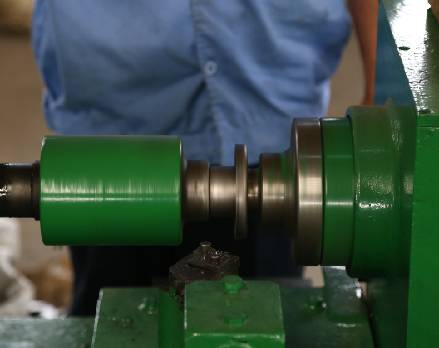 Afrikaans
Afrikaans  Albanian
Albanian  Amharic
Amharic  Arabic
Arabic  Armenian
Armenian  Azerbaijani
Azerbaijani  Basque
Basque  Belarusian
Belarusian  Bengali
Bengali  Bosnian
Bosnian  Bulgarian
Bulgarian  Catalan
Catalan  Cebuano
Cebuano  Corsican
Corsican  Croatian
Croatian  Czech
Czech  Danish
Danish  Dutch
Dutch  English
English  Esperanto
Esperanto  Estonian
Estonian  Finnish
Finnish  French
French  Frisian
Frisian  Galician
Galician  Georgian
Georgian  German
German  Greek
Greek  Gujarati
Gujarati  Haitian Creole
Haitian Creole  hausa
hausa  hawaiian
hawaiian  Hebrew
Hebrew  Hindi
Hindi  Miao
Miao  Hungarian
Hungarian  Icelandic
Icelandic  igbo
igbo  Indonesian
Indonesian  irish
irish  Italian
Italian  Japanese
Japanese  Javanese
Javanese  Kannada
Kannada  kazakh
kazakh  Khmer
Khmer  Rwandese
Rwandese  Korean
Korean  Kurdish
Kurdish  Kyrgyz
Kyrgyz  Lao
Lao  Latin
Latin  Latvian
Latvian  Lithuanian
Lithuanian  Luxembourgish
Luxembourgish  Macedonian
Macedonian  Malgashi
Malgashi  Malay
Malay  Malayalam
Malayalam  Maltese
Maltese  Maori
Maori  Marathi
Marathi  Mongolian
Mongolian  Myanmar
Myanmar  Nepali
Nepali  Norwegian
Norwegian  Norwegian
Norwegian  Occitan
Occitan  Pashto
Pashto  Persian
Persian  Polish
Polish  Portuguese
Portuguese  Punjabi
Punjabi  Romanian
Romanian  Russian
Russian  Samoan
Samoan  Scottish Gaelic
Scottish Gaelic  Serbian
Serbian  Sesotho
Sesotho  Shona
Shona  Sindhi
Sindhi  Sinhala
Sinhala  Slovak
Slovak  Slovenian
Slovenian  Somali
Somali  Spanish
Spanish  Sundanese
Sundanese  Swahili
Swahili  Swedish
Swedish  Tagalog
Tagalog  Tajik
Tajik  Tamil
Tamil  Tatar
Tatar  Telugu
Telugu  Thai
Thai  Turkish
Turkish  Turkmen
Turkmen  Ukrainian
Ukrainian  Urdu
Urdu  Uighur
Uighur  Uzbek
Uzbek  Vietnamese
Vietnamese  Welsh
Welsh  Bantu
Bantu  Yiddish
Yiddish  Yoruba
Yoruba  Zulu
Zulu Understanding the Function and Importance of Drive Belt Tensioner Pulleys in Vehicles
Understanding Drive Belt Tensioner Pulleys Function, Importance, and Maintenance
Drive belt tensioner pulleys play a crucial role in the efficient operation of a vehicle's engine, particularly in managing the serpentine belt system. The serpentine belt is a single, continuous belt that drives multiple accessories in the engine, such as the alternator, power steering pump, water pump, and air conditioning compressor. To ensure that these components operate smoothly, maintaining the correct tension of the serpentine belt is essential, and this is where the drive belt tensioner pulley comes into play.
Function of Drive Belt Tensioner Pulleys
The primary function of a drive belt tensioner pulley is to maintain the proper tension on the serpentine belt. This is typically achieved through a spring-loaded mechanism that automatically adjusts the tension based on the operating conditions of the engine. As components attached to the belt spin, they can cause variations in belt tension due to wear or changes in load. The tensioner compensates for these fluctuations, ensuring that the belt remains tight enough to function effectively without slipping or making noise.
One of the key advantages of a well-functioning tensioner pulley is its ability to prolong the life of the serpentine belt and the components it drives. An improperly tensioned belt can lead to premature wear, slippage, and even complete failure. By keeping the belt properly tensioned, the tensioner helps maintain optimal performance and efficiency in the vehicle’s engine.
Importance of Regular Maintenance
Like all mechanical components, drive belt tensioner pulleys require regular maintenance to ensure their longevity and reliability. Over time, the spring mechanism and bearings within the tensioner can wear out, leading to decreased tension and increased noise. Signs of a failing tensioner pulley may include
drive belt tensioner pulley

1. Belt Squeaking or Chirping This often indicates that the tensioner is not applying enough pressure on the belt. 2. Belt Slippage If the serpentine belt slips off or appears to be loose, it may be a sign that the tensioner has lost its efficiency. 3. Excessive Vibration Unusual vibrations within the engine compartment can be a result of a failing tensioner, which can lead to additional damage if not addressed. 4. Visible Damage Cracks or wear on the tensioner pulley can be an indication that it’s time for replacement.
When to Replace Drive Belt Tensioner Pulleys
Typically, it’s good practice to replace the drive belt tensioner pulley as part of routine maintenance when replacing the serpentine belt. This ensures that all components are functioning harmoniously. It’s generally recommended to inspect the tensioner and belt every 60,000 to 100,000 miles, depending on the manufacturer’s recommendations.
When replacing the tensioner pulley, it is essential to use OEM (Original Equipment Manufacturer) parts to ensure compatibility and performance. After installation, testing the tension of the serpentine belt and checking for any noise or slippage should follow.
Conclusion
In summary, the drive belt tensioner pulley is a vital component of your vehicle's engine that should not be overlooked. By maintaining the proper tension on the serpentine belt, it helps ensure that various engine accessories function correctly, improving overall engine performance and longevity. Regular inspections and timely replacements of the tensioner pulley can prevent costly repairs down the line and contribute to a smoothly running vehicle. Always consult your vehicle’s manual for specific maintenance schedules and guidelines to keep your engine in peak condition.
-
Revolutionizing Conveyor Reliability with Advanced Rubber Lagging PulleysNewsJul.22,2025
-
Powering Precision and Durability with Expert Manufacturers of Conveyor ComponentsNewsJul.22,2025
-
Optimizing Conveyor Systems with Advanced Conveyor AccessoriesNewsJul.22,2025
-
Maximize Conveyor Efficiency with Quality Conveyor Idler PulleysNewsJul.22,2025
-
Future-Proof Your Conveyor System with High-Performance Polyurethane RollerNewsJul.22,2025
-
Driving Efficiency Forward with Quality Idlers and RollersNewsJul.22,2025





























